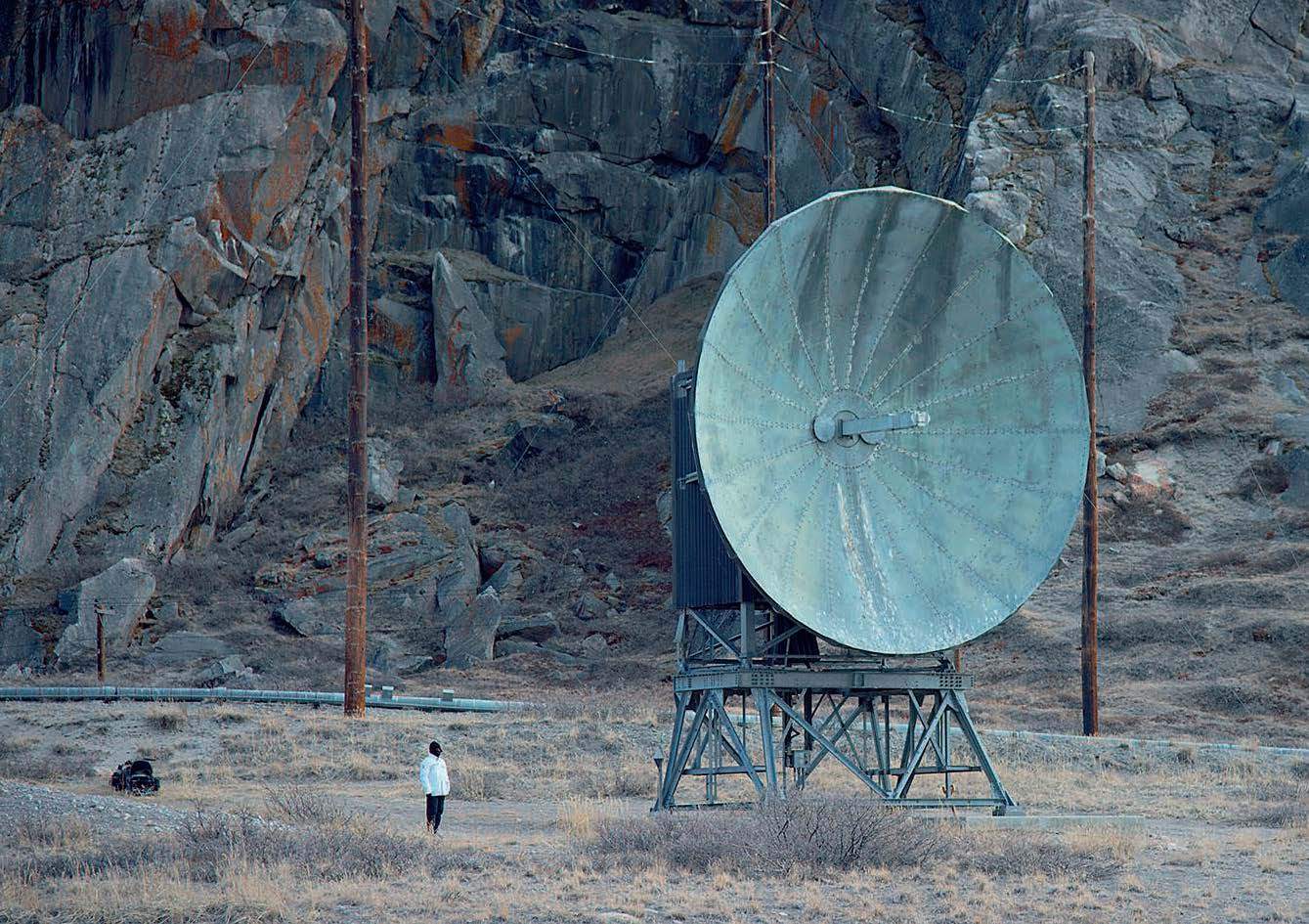Purple.
John Akomfrah
Exhibition Review
Barbican Gallery
Published Winter 2018.

Image courtery of Barbican Gallery© 2017
‘O Earth- what changes hast thou seen!’, a statement so byronically poetic and yet, pensively simple appears in white text across six screens of a deep purple, before disappearing once more. This apt, powerful and all-encompassing loan of verse from the great Tennyson, serves as both modus operandi and credo alike within the abstractly titled Purple, an immersive installation in which viewers are presented with the full scope of man’s fight, follies and steadfast march towards progress as we know it.
Purple is emotive, there is no escaping that. Like an ergonomically designed garment, it cloaks those viewing it with equal measures of comfortability and curiosity, thus showing them the true nature of their destructive and sympathetically complex species by way of a romantic, sharp honesty. With six panoramic screens at its disposal spanning across the entirety of the Barbican’s Curve viewing room and sheer darkness in ample supply, the presentation of these otherwise mundane or educational splices of now-ancient footage, takes on a more engaging form. We see footage of countless factory workers assembling bicycles in their thousands (of which one can’t help but wonder where those antique gems are now), wartime children playing and singing, babies still within their mothers, being inspected by way of ultrasound and it’s almost science-fiction whooping call. We see young children learning to dance within orchestrated rituals, political leaders marching on by crowds of well-wishers and we see the dead, and those that mourn them. The musical score, consisting mainly of lamenting string sections and soft piano musings that often hint to the likes of contemporary composers such as Max Richter, galvanises the cinematic angle of the carefully curated and restored archival footage, that makes up the bulk of the installation. Weaving between them, is a newly-shot film created in 2017 by Akomfrah, which part allegory part commentary, serves as a more contemporary accompaniment to the black and white, primitively filmed others. Yet, through this all, it becomes apparent that no matter the decade, the country or the season, as much as humans strive for better, as much as we fight and divide, mine and pillage, we are all the very same. We’ve been told this, probably an unholy amount of times in our lifetimes, usually in the context of politically correct speakers on chat-shows, or having read it within pseudo-religious texts in schoolbooks, but to see this very fact, one reiterated over an hour (and a bit’s) worth of footage and speech is both humbling and emotional. It is in this same breath, that we can take time to acknowledge the scope of the united suffering that the Earth and its inhabitants are experiencing within the Anthropocene Era, and the resulting extinction that we're faced with, due to the unrelenting strain on the green island that which we all live upon.
But what of Akomfrah’s presence as an artist, within all of this. Aside from considerate curator, what is his role within Purple? Aside from the aforementioned video created especially for the installation, that drifts in and out of neighboring archival footage, the entrance of the exhibition is host to several physical artistic expressions. A colossal pile of used rubber car tyres, perfumes the doorway with a heavy odour, whilst a collection of staged photographs sit on either side of adjacent facing walls. Like many scenes within Akomfrah’s directed film, his images appear too literal, lacking the artistic finesse, and orchestration possible for a topic so hot and so expansive as man's destruction of the Earth. Yes, they all feature isolated and far-flung locations, and a budget to match, but the content with its period costume dressed subjects and oversized foreboding clocks around human junk comes across as more bizarre-Steampunk than poignant-contemporary which is a shame. The preceding corridor to the exhibit, above which dozens of lit plastic jerry-cans hang like dirty chandeliers, does make for an interesting appetiser. it’s also worth noting that for such an expansive and heavily curated project as Purple, the archival footage chosen lacks in scenes of the mass devastation, pollution and destruction that the exhibit itself was created in reaction to.
And yet, the journey traversed in watching Purple in its entirety is one that feels necessary to do over, and over again. In many ways, Purple felt like the Voyager Golden Record within the form of a video; something that we might launch into the cosmic abyss, as both a forewarning and biography of homo-sapiens and their way of living. Come what may on the Earth, things will get worse before it gets better, and voices like Akomfrah’s will be the ones cited once the tide has in its social entirety, finally turned for the better.